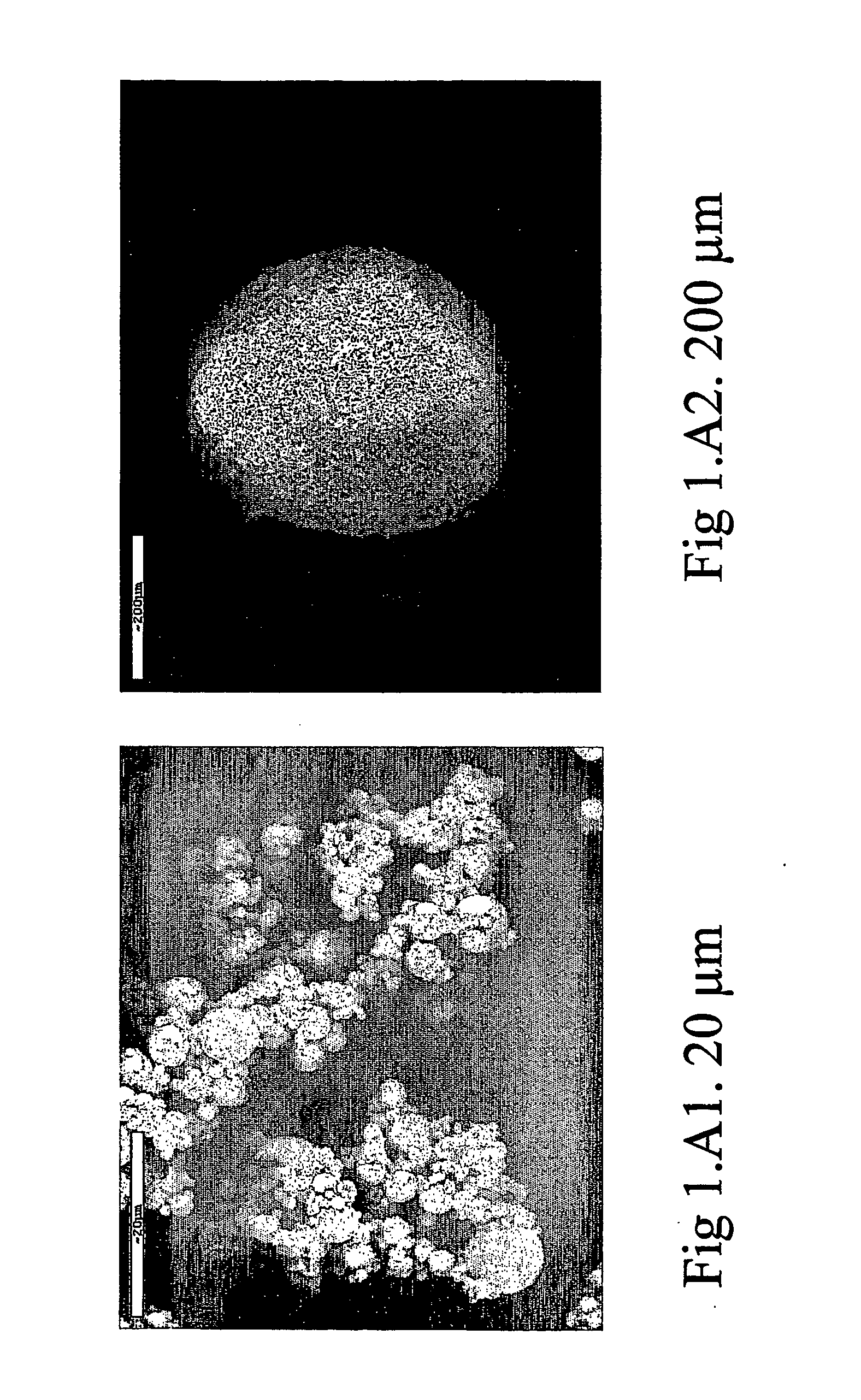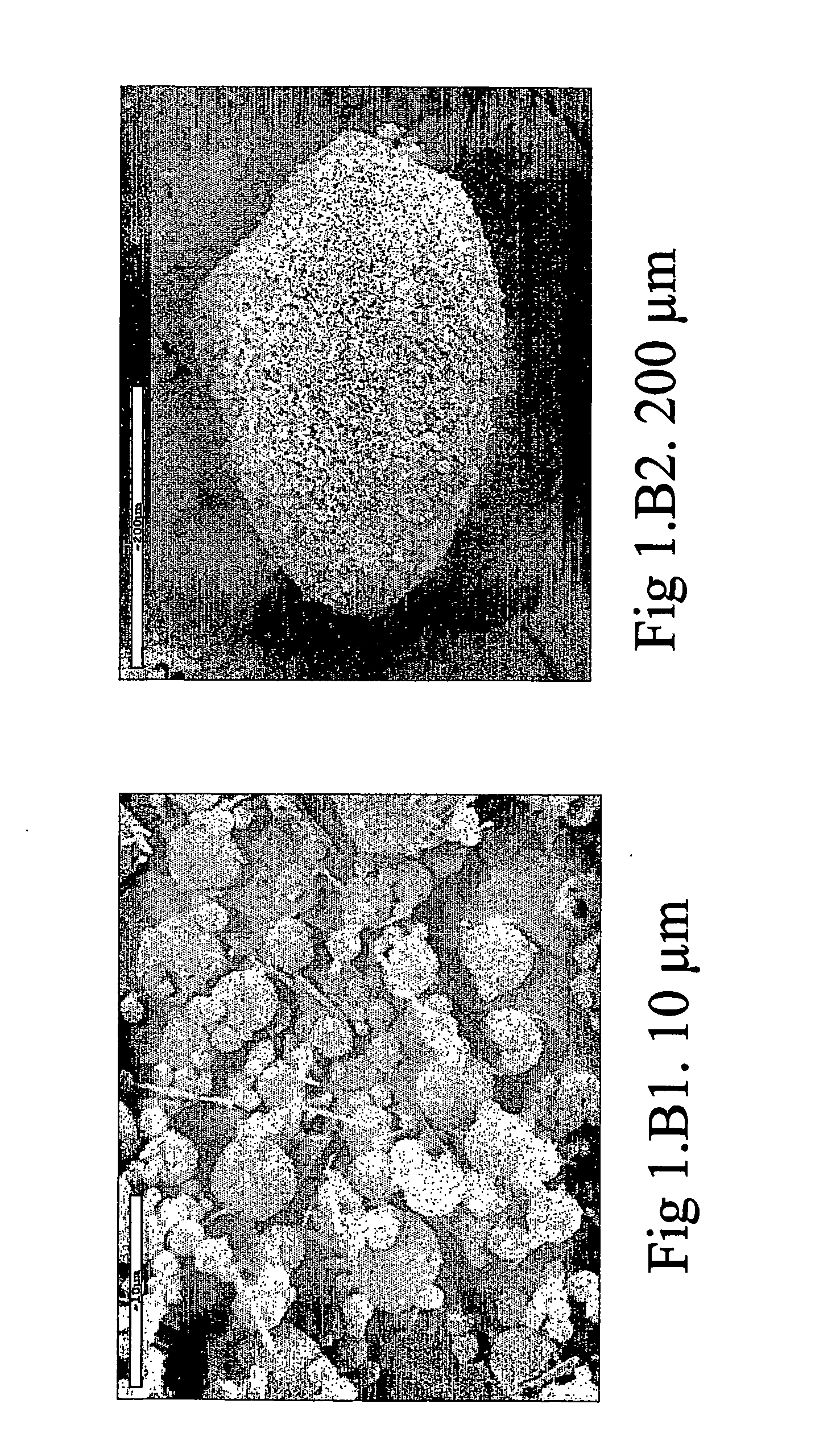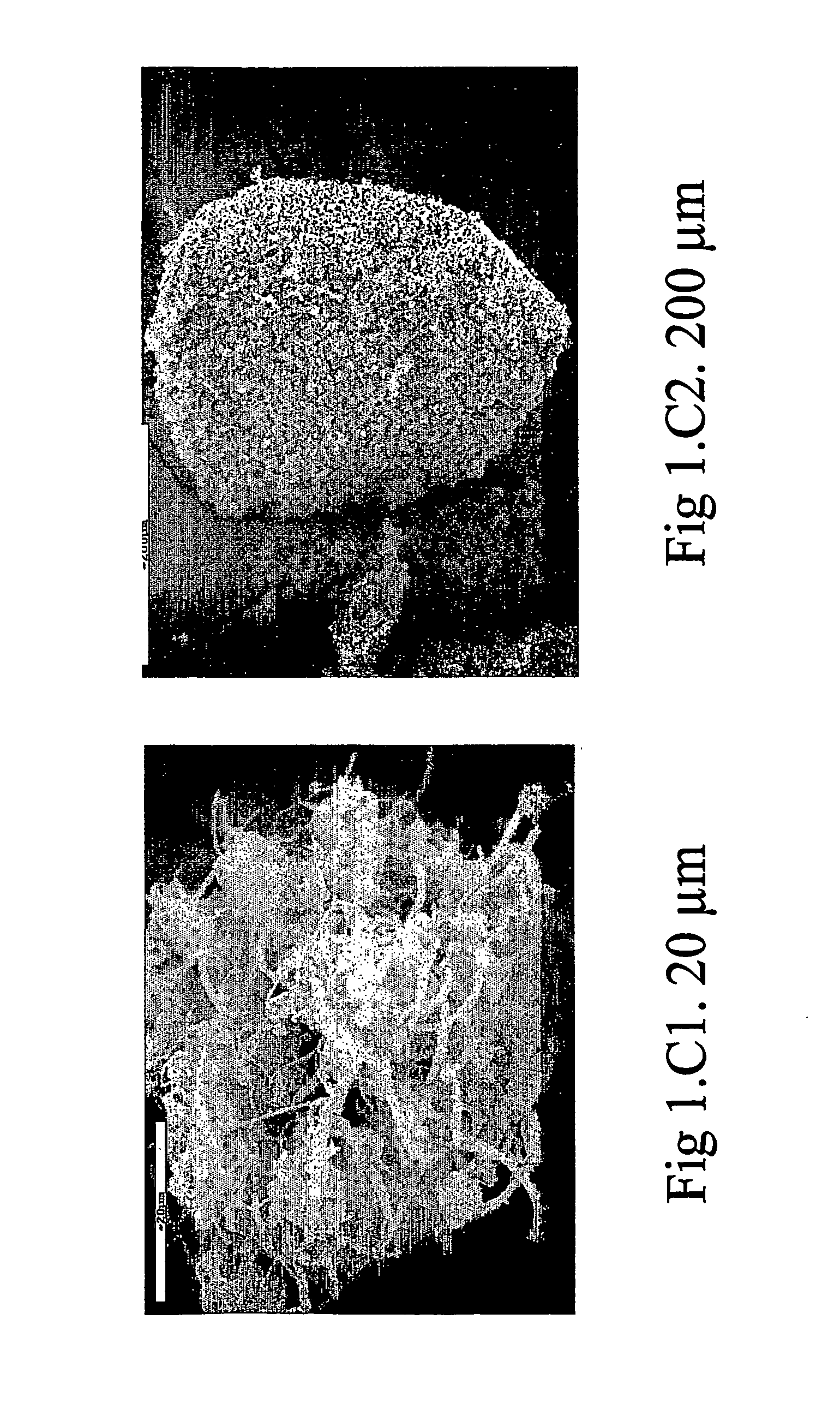Powder for nasal administration of drugs
a technology for nasal powder and drugs, applied in the field of drug formulas, can solve the problems of bronchial spasm, bronchial spasm, and the inapplicability of soft pellets in the specific field of nasal powders
- Summary
- Abstract
- Description
- Claims
- Application Information
AI Technical Summary
Benefits of technology
Problems solved by technology
Method used
Image
Examples
example 1
[0066] 95 g of mannitol were dissolved in 2500 ml of distilled water, kept in agitation at 40° C. 5 g of lecithin dissolved in 400 ml of ethanol were dispersed in the solution obtained. The solution obtained was spray-dried using a spray-drying device (Mini Spray Dryer Buchi Model B-191), in the following operative conditions: [0067] input air temperature: 90° C.; [0068] output air temperature: 38-40° C.; [0069] solution flow rate: 6.5 ml / min; [0070] nozzle diameter: 1.0 mm; [0071] air flow rate: 600 l / h.
[0072] The powder obtained was composed of particles having a median diameter-volume (D50), established by means of a “light scattering” test, of 4.5 μm, with a measured yield of 70% with respect to the quantity of solid present in the sprayed solution. The dimensional distribution of the powder thus obtained was such that 80% of the powder was in the diameter range between 2.45 μm (D10) and 7.72 μm (D90), D10 being the lowest diameter percentile value, that is not reached by 10% o...
example 2
[0074] 10 g of caffeine and 83.3 g of mannitol were dissolved in 2500 ml of distilled water, kept in agitation at 40° C. 6.7 g of lecithin dissolved in 400 ml of ethanol were dispersed in the solution obtained. The solution obtained was spray-dried using a spray-drying device (Mini Spray Dryer Buchi Model B-191), in the following operative conditions: [0075] input air temperature: 90° C.; [0076] output air temperature: 38-40° C.; [0077] solution flow rate: 6.5 ml / min; [0078] nozzle diameter: 1.0 mm; [0079] air flow rate: 600 l / h.
[0080] The powder obtained was composed of particles having a median diameter-volume (D50), established by means of a “light scattering” test, of 4.36 μm, with a measured yield of 60% with respect to the quantity of solid present in the sprayed solution. The dimensional distribution of the powder thus obtained was such that 80% of the powder was in the diameter range between 4.06 μm (D10) and 4.93 μm (D90), D10 being the lowest diameter percentile value, th...
example 3
[0082] 65.1 g of caffeine, 2 g of Methocel E3 and 27.9 g of mannitol were dissolved in 3500 ml of distilled water, kept in agitation at 40° C. 5 g of lecithin dissolved in 400 ml of ethanol were dispersed in the solution obtained. The solution obtained was spray-dried using a spray-drying device (Mini Spray Dryer Buchi Model B-191) in the following operative conditions: [0083] input air temperature: 90° C.; [0084] output air temperature: 38-40° C.; [0085] solution flow rate: 6.5 ml / min; [0086] nozzle diameter: 1.0 mm; [0087] air flow rate: 600 l / h.
[0088] The powder obtained was composed of particles having a median diameter-volume (D50), established by means of a “light scattering” test, of 10.48 μm, with a measured yield of 64% with respect to the quantity of solid present in the sprayed solution. The dimensional distribution of the powder thus obtained was such that 80% of the powder was in the diameter range between 4.46 μm (D10) and 19.6 μm (D90), D10 being the lowest diameter ...
PUM
| Property | Measurement | Unit |
|---|---|---|
| Temperature | aaaaa | aaaaa |
| Temperature | aaaaa | aaaaa |
| Length | aaaaa | aaaaa |
Abstract
Description
Claims
Application Information
 Login to View More
Login to View More - R&D
- Intellectual Property
- Life Sciences
- Materials
- Tech Scout
- Unparalleled Data Quality
- Higher Quality Content
- 60% Fewer Hallucinations
Browse by: Latest US Patents, China's latest patents, Technical Efficacy Thesaurus, Application Domain, Technology Topic, Popular Technical Reports.
© 2025 PatSnap. All rights reserved.Legal|Privacy policy|Modern Slavery Act Transparency Statement|Sitemap|About US| Contact US: help@patsnap.com



